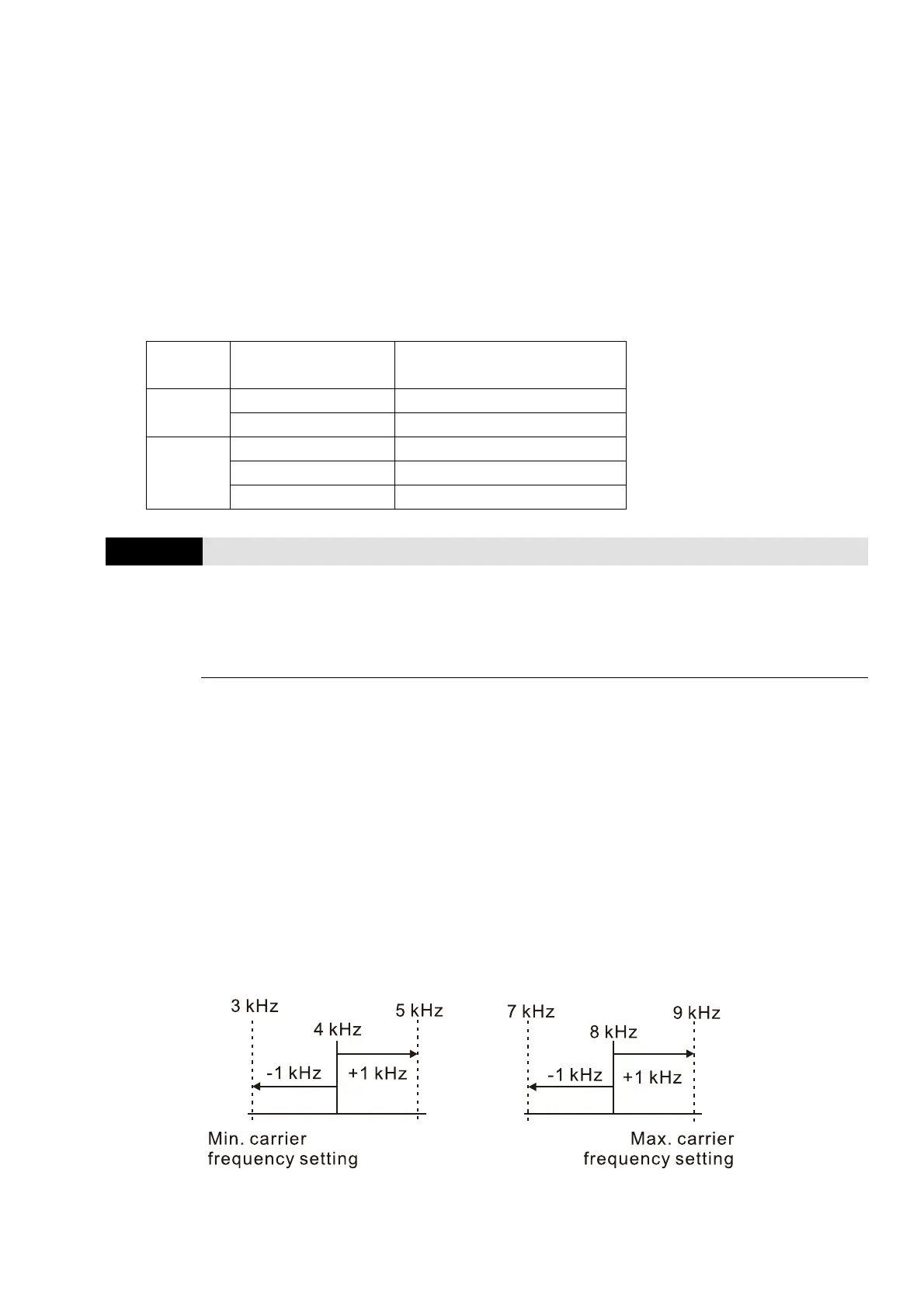Chapter 12 Descriptions of Parameter SettingsC2000 Plus
12.1-01-43
When the RPWM function is enabled, the drive randomly distributes the carrier frequency based
on actual Pr.00-17 carrier frequency settings.
The RPWM function can be applied to all control modes.
Once the RPWM function is enabled, particularly high frequency audio noise is reduced, and the
audio frequency produced by the running motor also changes (usually from a higher to lower).
Three RPWM modes are provided for different applications. Each mode corresponds to different
frequency distribution, electromagnetic noise distribution, and audio frequency.
The settings for Pr.00-17 (Carrier Frequency) vary with enabling or disabling RPWM. When the
RPWM function is enabled, the default setting value for Pr.00-17 is according to the table below.
Model Power Range (kW)
Pr.00-17 (Carrier Frequency)
Default Setting Value
220V
0.75–7.5 7 kHz
11–90 6 kHz
440V
0.75–11 7 kHz
15–55 6 kHz
75–560 5 kHz
00-34
RPWM Range
Default: 0.0
Settings 0.0–4.0 kHz
Pr.00-17 = 4 kHz, 8 kHz: 0.0–2.0 kHz
Pr.00-17 = 5 kHz, 6 kHz, 7 kHz: 0.0–4.0 kHz
When the RPWM function is enabled, the minimum carrier frequency setting for Pr.00-17 is 3
kHz, and the maximum is 9 kHz.
Pr.00-34 is valid only when the RPWM function is enabled (Pr.00-33 ≠ 0).
When the RPWM function is enabled and Pr.00-17 is set to 4 or 8 kHz, the setting range for
Pr.00-34 is 0.0–2.0 kHz (±1 kHz).
Example:
When Pr.00-17 = 4 kHz, Pr.00-33 is enabled (= 1, 2, or 3), Pr.00-34 = 2.0 kHz, then the carrier
frequency outputs on the basis of 4 kHz, and the random frequency distribution tolerance is ±1
kHz, that is, the carrier frequency randomly fluctuates from 3 kHz to 5 kHz.
When Pr.00-17 = 4 or 8 kHz, the maximum setting for Pr.00-34 is 2.0 kHz (±1 kHz). The carrier
frequency fluctuation range is according to the diagram below.

